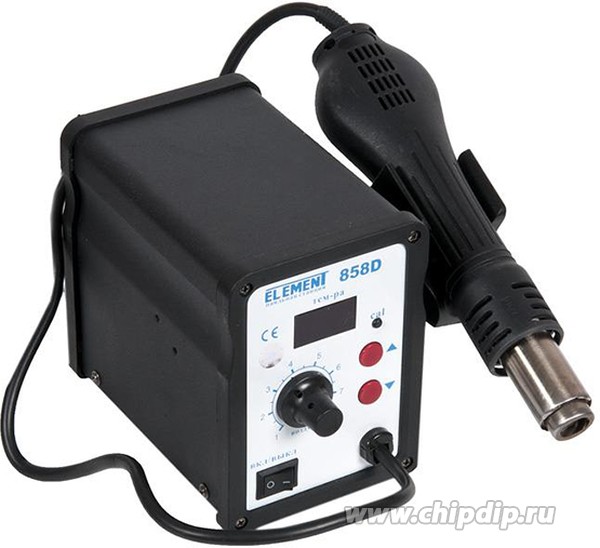Soldering tips for atmega328p-au?
-
@Yveaux said:
@NeverDie use drag soldering. Remove excess solder using wick.
Thanks. I just now tried the Dave Jones method of tack and reflow, and had success with that. I found the most essential thing is to verify that the chip is perfectly aligned before proceeding after the solder tack. If it's not, I found I absolutely MUST re-position it until it is before proceeding. That's probably the hardest part of the entire operation. I didn't need to use a microscope or other magnification during the soldering process itself.
I didn't have any solder wick on hand, but I was able to wick off the excess solder using the soldering tip, and then cleaning the tip between "wicks".
-
I'm wondering if anyone has found a truly easy way to solder the surface mount atmega328p-au to a pcb?
Things I've tried in the past that seemed to help:
- tack a corner pad using solder paste, or
- position the chip using super glue, then solder afterward
I'm aware some people use a reflow oven. I haven't tried that yet.
Anything else?
@NeverDie said:
Things I've tried in the past that seemed to help:
- tack a corner pad using solder paste, or
- position the chip using super glue, then solder afterward
I'm aware some people use a reflow oven. I haven't tried that yet.
Anything else?
Use flux. If you have a "real" PCB (with soldermask etc) it's surprisingly easy to solder a 328P-AU. I tack down two opposite corners and then apply flux. After that I solder the remaining connections. Both a normal soldering iron with a very small tip and drag soldering withs fine. For the fine tip I recommend using thin solder - I have a roll of 0.38 mm that works fine. Also, use leaded solder instead of leadfree.
If you feel you need to practice more you can buy cheap kits from China where you can practice - like this https://www.aliexpress.com/item/IC-patch-welding-practice-board-Advanced-full-patch-welding-plate-to-practice-Enhanced-SMT-skills-training/32661881281.html?spm=2114.13010608.0.0.mfafIB
-
Yeah, I forgot to mention the flux, but I totally agree. Dave Jones says "you can never have too much flux" in his video, and I agree with that too (except it does mean more work cleaning off the excess with IPA). It's getting the initial orientation right that's the tricky part. Once that's fixed in place by the tacking, it seems to go relatively easy.
Seems like a reflow oven might have a different set of issues to contend with. Would a reflow oven be any easier or faster?
-
Yeah, I forgot to mention the flux, but I totally agree. Dave Jones says "you can never have too much flux" in his video, and I agree with that too (except it does mean more work cleaning off the excess with IPA). It's getting the initial orientation right that's the tricky part. Once that's fixed in place by the tacking, it seems to go relatively easy.
Seems like a reflow oven might have a different set of issues to contend with. Would a reflow oven be any easier or faster?
@NeverDie I have no experience with reflow ovens but to me it seems that it's mostly useful for batches of boards, since you need to create a stencil for the solderpaste. For a couple of boards handsoldering still seems like the best solution to be. I've been surprised what can be handsoldered - even small DFN packages (like the Si7021) is pretty easy to handsolder
-
@NeverDie I have no experience with reflow ovens but to me it seems that it's mostly useful for batches of boards, since you need to create a stencil for the solderpaste. For a couple of boards handsoldering still seems like the best solution to be. I've been surprised what can be handsoldered - even small DFN packages (like the Si7021) is pretty easy to handsolder
-
@chrille
Have you tried hand soldering a BME280? It looks a bit more challenging to me than the si7021, but perhaps it's still do-able.@NeverDie said:
Have you tried hand soldering a BME280? It looks a bit more challenging to me than the si7021, but perhaps it's still do-able.
I only tried the Si7021, where the pads is both on the bottom and a bit on the side. For DFN/QFN's where the pads is only on the bottom I agree it's harder. I saw a interesting concept where the layout had a lot of vias directly under the DFN/QFN and you could heat the PCB from the opposite site using a traditional soldering iron. Of course you would still need solder paste for this
-
Given a decent hot air station costs ca. $35 these days, it's definitely worth considering.
-
@Toyman
Are you referring to a hot air pencil, or the underneath air heater that pre-heats the whole board? -
@Toyman said:
@NeverDie said:
@Toyman
Are you referring to a hot air pencil, or the underneath air heater that pre-heats the whole board?Something like this:

Yup, I have one of those, mostly because Dave Jones gave that model his thumbs up.
Not quite the same as a reflow oven though because it can blow parts around (though maybe that's just me being a noob). -
@Toyman said:
@NeverDie said:
@Toyman
Are you referring to a hot air pencil, or the underneath air heater that pre-heats the whole board?Something like this:

Yup, I have one of those, mostly because Dave Jones gave that model his thumbs up.
Not quite the same as a reflow oven though because it can blow parts around (though maybe that's just me being a noob). -
I haven't tried it on an atmega328p-au. Have you? Are you able to get all the solder paste molten at once so that the chip does auto-alignment with the pads like it would in a reflow oven?
